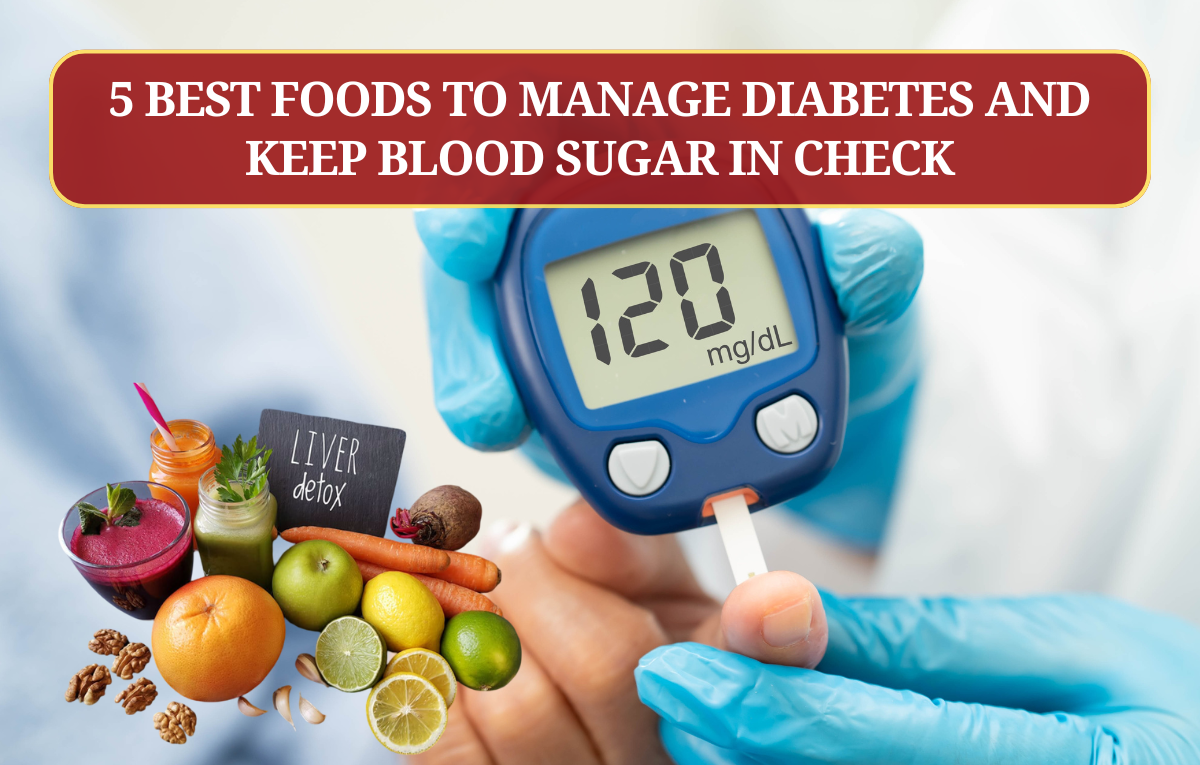Diabetes is among the most prevalent yet most serious conditions today. It’s not merely all about drugs or checking your blood sugar levels; it’s closely related to your diet and lifestyle. If you really desire to manage your blood sugar, you must give utmost attention to your diet, rather than your drugs. Whatever you eat has a direct influence on your body’s ability to use insulin and glucose.
Unless you are eating right, your sugar levels will be irregular, even with the best medication. But by including natural and healthy food in your daily diet, you can regulate your blood sugar as much as possible without any side effect. Let’s discuss 5 of the finest foods that work wonders in managing diabetes and also keep your body healthy and strong.
1. Leafy Green Vegetables – The Low-Carb Powerhouses
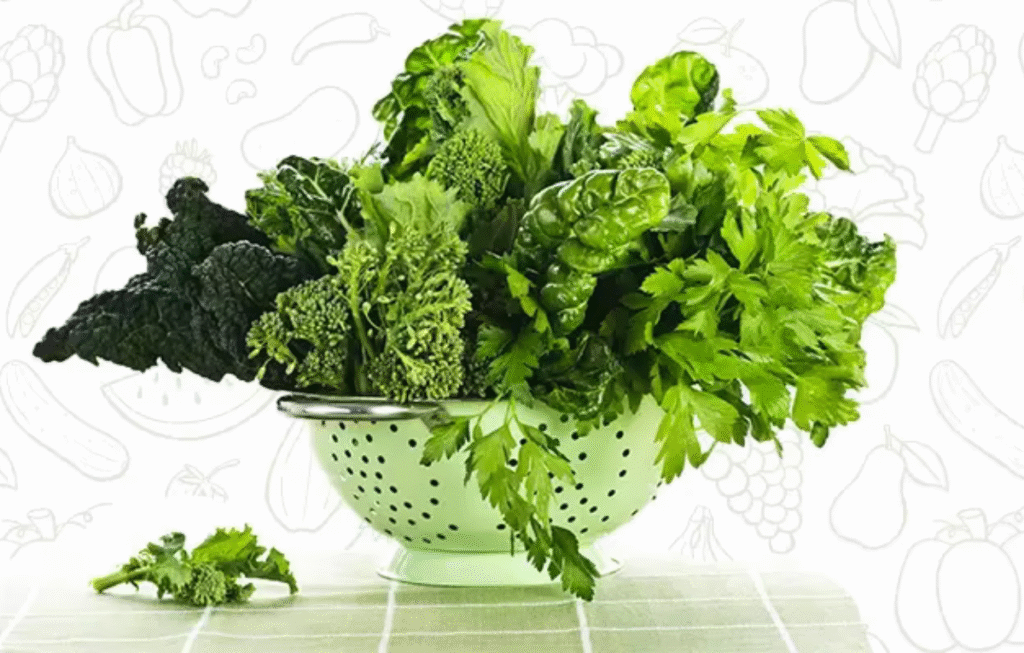
Leafy greens like spinach, fenugreek, mustard greens, amaranth, kale, collard greens, etc., are a blessing for diabetics. They are low in carbohydrates and calories but high in fiber, iron, magnesium, and antioxidants.
Why They’re Good for Blood Sugar:
- The fiber and magnesium in green leafy vegetables regulate blood sugar.
- The fiber retards the intake of sugar after a meal so that blood sugar doesn’t rise too quickly.
- Furthermore, antioxidants such as lutein and zeaxanthin present in them also promote eye care because eyes are also quickly affected by diabetes.
How to Add Them to Your Diet:
- Prepare a spinach or fenugreek smoothie for breakfast.
- Add lightly oiled sautéed vegetables to lunch or dinner.
- Including a little spinach or amaranth in dal or soup will add taste and nutrition.
Pro Tip
If you consume at least one bowl of green vegetables per day, your sugar levels will be very steady within a few weeks. Green vegetables are destroyed by overcooking them. Always boil or steam them lightly—this helps retain the nutrients.
2. Whole Grains – A Smarter Source of Carbs
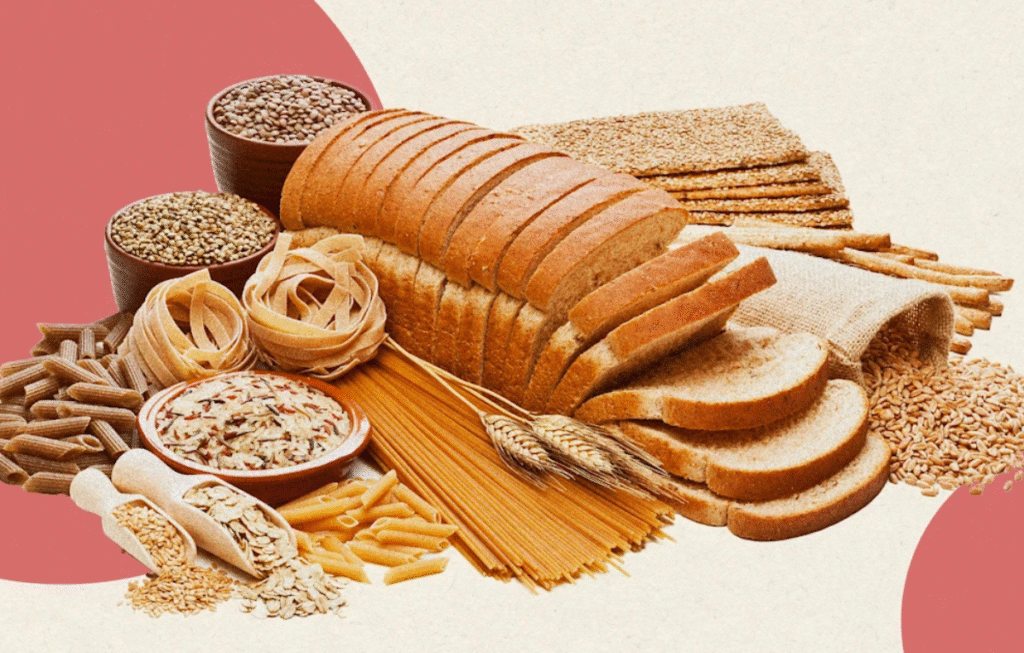
People commonly think that diabetics have to eliminate carbs from their diet completely. This, however, is not true. To reduce the risk of diabetes, refined carbs (White rice, refined flour, and sugar) should be completely removed from our diets, while whole grains (Oats, brown rice, sorghum, millet, quinoa, and wheat) should be consumed instead.
Why They’re Good for Blood Sugar:
- Whole grains are very high in fiber which makes it a slow process for the body to digest hence resulting in slow glucose release into the blood.
- Thus, the food’s gradual release of the sugar into the blood cause a Low Glycemic Index (GI) situation.
- It helps to keep your insulin level constant and you feel energized all day long.
How to Add Them to Your Diet:
- You can have a daily a or oatmeal porridge breakfast.
- Always opt for brown rice or quinoa instead of white rice.
- You can make chapati with some barley or foxtail millet mixed in with wheat flour.
Pro Tip
If the daily intake of whole grains is maintained, not only will diabetes but also digestion, skin, and heart will be healthy. Avoid buying “multigrain” products that come in packaging, as they may contain refined flour. Always check for “100% Whole Grain” in the label.
3. Berries – Sweet Yet Diabetic-Friendly
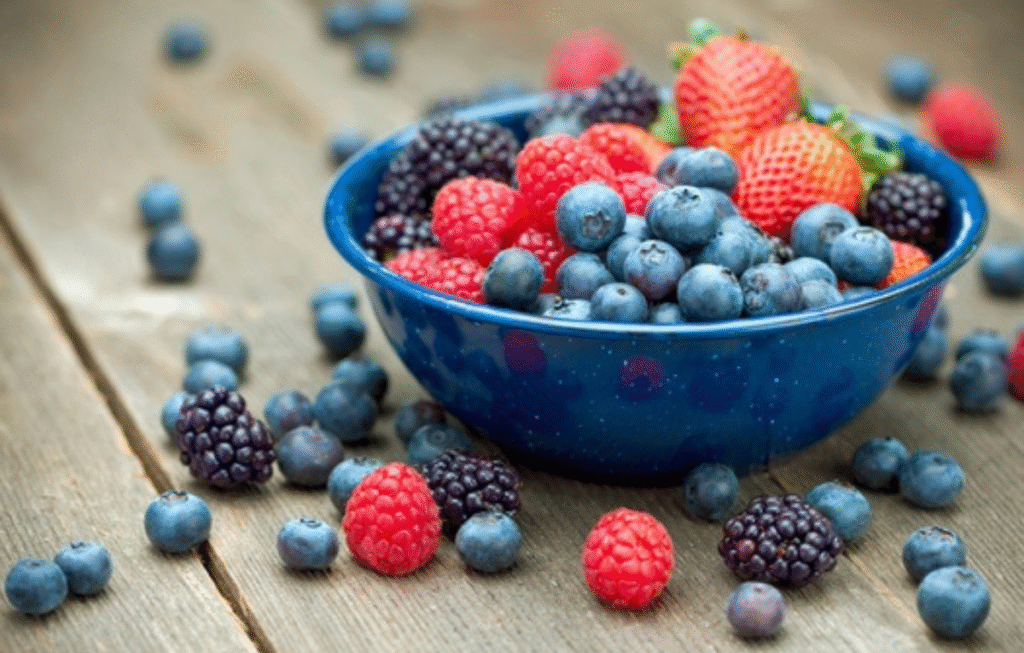
In case you are a sweets lover but are afraid of sugar, then berries are a perfect treat for you. Strawberries, blueberries, raspberries, and blackberries are super low in sugar, yet they are sweet by nature.
Why They’re Good for Blood Sugar:
- Berries contain anthocyanins, which are chemicals that increase the body’s insulin sensitivity and reduce inflammation.
- The fiber in berries promotes good digestion and keeps blood sugar levels stable.
- Moreover, daily intake of berries reduces the risk of heart diseases—a common problem among diabetics.
How to Add Them to Your Diet:
- Top your yogurt or oatmeal with a mix of fresh berries for breakfast.
- You can also prepare a smoothie without sugar and drink it.
- Nosh on some berries during your evening snack.
Pro Tip
Avoid the canned or syrup-cooked berries found in stores because they contain added sugar. The best ones are fresh or frozen.
4. Fatty Fish – For Heart and Sugar Health
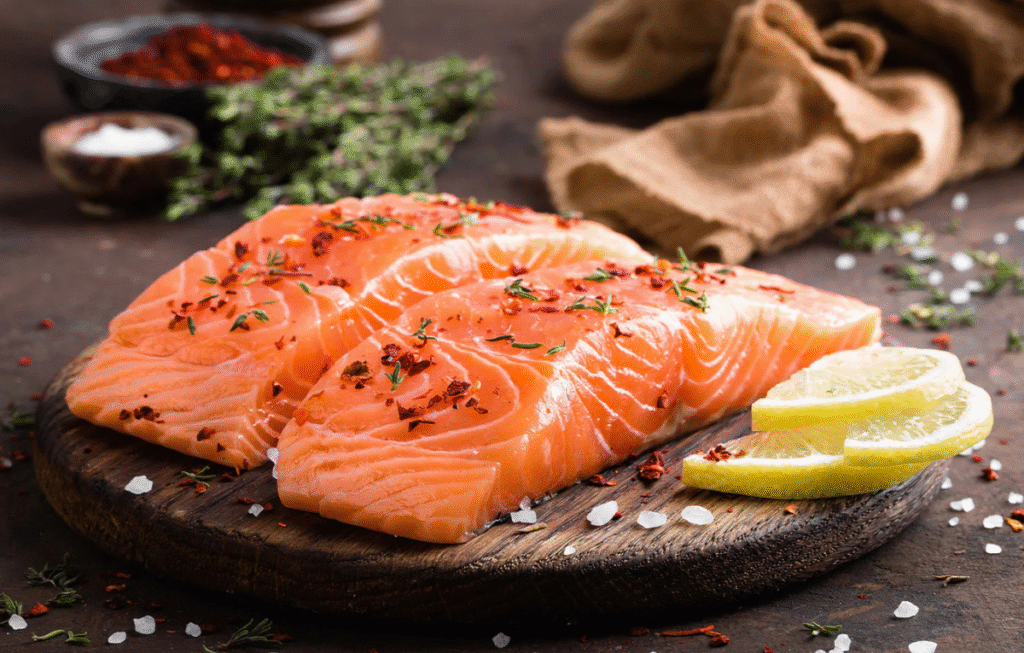
If you don’t follow a vegetarian diet, fish is one of the best foods for you. Salmon, tuna, mackerel, sardines, and trout have a lot of omega-3 fatty acids, which are beneficial for heart disease as well as blood sugar levels.
Why They’re Good for Blood Sugar:
- Individuals with diabetes often have inflammation and elevated triglycerides.
- Fatty fish reduces both of those and improves insulin sensitivity.
- Fish does not lower blood sugar, but improves metabolic health, which stabilizes blood sugar.
How to Add Them to Your Diet:
- Eat grilled or baked fish 2-3 times each week.
- Deep frying fish reduces its nutrition quality.
- Eat fish with salad, soup or vegetables.
Pro Tip
If you are vegetarian, you can get omega-3 fatty acids from flaxseed, chia seed, and walnuts.
5. Nuts and Seeds – Small in Size, Big in Benefits
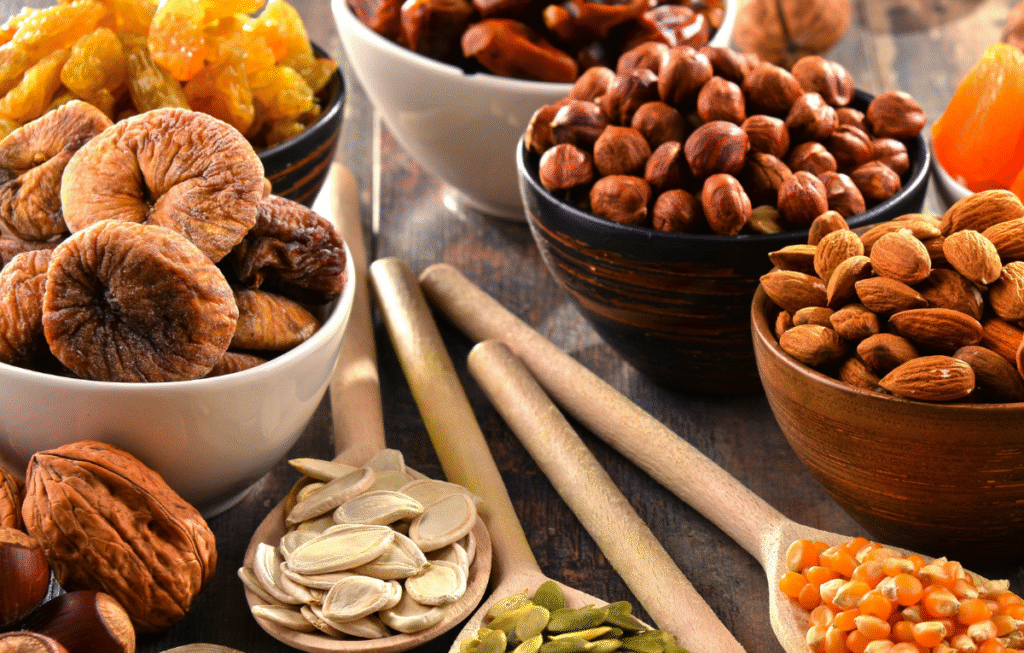
Nuts and seeds are small in stature, but their advantage is gigantic. Almonds, walnuts, pistachios, flax seeds, pumpkin seeds, and chia seeds are rich in healthy fats, protein, and fiber—all work to regulate blood sugar.
Why They’re Good for Blood Sugar:
- The monounsaturated and polyunsaturated fats in nuts delay the body’s absorption of carbohydrates and decrease insulin resistance.
- Daily consumption of nuts assists in regulating blood sugar, decreasing cholesterol, and promoting heart health.
How to Add Them to Your Diet:
- Consume 4–5 soaked almonds or 2 walnuts in the morning.
- Add chia or flax seeds to yogurt or salad.
- Have plain nuts rather than salted or sugar-coated nuts at the time of a snack.
Pro Tip
Market-bought sugared or roasted nuts are unsafe. Raw or light-roasted nuts are always the best choice.
Bonus Tip: Don’t Forget Hydration
Water is your body’s best, but easiest, form of a “natural medicine.” When your body is not hydrated well, blood glucose levels increase. Drinking an abundance of water helps your kidneys properly remove excess sugar.
Here is what to do:
- Drink at least 8-10 glasses of water daily.
- Avoid drinking sugary juices, soda/pop, or cold drinks.
- You can flavor your water with lemon, mint, or cucumber.
- Coconut water is healthy for you, but drink in moderation.
Healthful Eating Schedule – Create the Ideal Equilibrium on Your Plate
Nutrition is not just about consuming the right items; it is about balancing. The plate of a diabetes patient should be arranged in this way:
- The vegetables take the largest part of the plate: for example, there are bottle gourd, tinda, zucchini, spinach, and cabbage.
- The smallest part of the plate is allocated to protein: lentils, kidney beans, paneer, eggs, or fish can be taken.
- The remaining quarter of the plate is allocated to whole grains: brown rice, quinoa, or roti will do.
- This distribution helps in maintaining the glucose levels of the body throughout the day and at the same time the body receives all the nutrients it demands.
Smart Meal Planning for Blood Sugar Balance
Diabetes management is not just a matter of diet but rather an overall lifestyle choice. Here are a few daily practices that will contribute to your long-term health:
- Daily exercise: Walk, do yoga or ride a bike for at least half an hour a day.
- Good Sleep: Insulin can be controlled with 7-8 hours of sleep.
- Stress management: Stress leads to high blood sugar. So, meditation is a good practice.
- Frequent doctor visits: Get your sugar level checked every week.
- Don’t starve for long hours: Starving for long hours can cause a severe drop in blood sugar levels.
Conclusion
Diabetes is not a curse but a signal that your body needs care. This ailment only becomes dangerous when we overlook it. If you follow a lifestyle of a proper diet and a little bit of discipline, diabetes can be completely defeated.
Vegetables, whole grain foods, fruits, fish, and nuts—if you make these five foods a part of your daily routine, not only will your sugar levels be under control, but also your heart, brain, and digestive system will remain healthy.
FAQs:-
Which foods are best for controlling diabetes naturally?
Foods like leafy greens, whole grains, fatty fish, nuts, and berries help stabilize blood sugar and improve insulin sensitivity naturally.
What’s the best snack option for diabetics?
Snacks like nuts, Greek yogurt, or vegetable sticks with hummus keep you full and help prevent sugar spikes.
How do leafy greens help manage blood sugar levels?
Leafy greens are low in carbs and high in fiber, helping slow glucose absorption and prevent blood sugar spikes.

